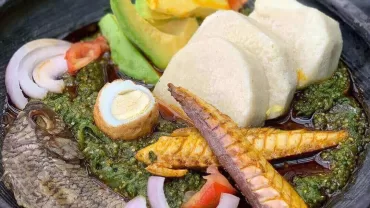Ghana, often referred to as the “Gateway to Africa,” is a country brimming with rich traditions, vibrant arts, and a deep cultural heritage. From colorful festivals to intricate crafts, Ghana’s arts and culture are a blend of history, creativity, and the diverse ethnic groups that call the country home. Here’s a peek into the incredible arts and cultural scene in Ghana.
1. Traditional Music and Dance
Ghana is renowned for its diverse musical genres, each tied to specific regions and ethnic groups. The rhythms of drumming play a central role, especially with instruments like the djembe, talking drum, and xylophone. Traditional dances like the Adowa, Azonto, and Kpalongo often accompany performances and are an essential part of ceremonies, celebrations, and festivals. The beat and movement are inextricable from the daily life of Ghanaians.
2. Kente Cloth
No exploration of Ghana’s culture is complete without mentioning Kente, the colorful handwoven fabric that originated with the Ashanti people. Traditionally, Kente was reserved for royalty and sacred events, but today, it has become a symbol of national pride. The intricate patterns and vibrant colors of Kente convey stories, wisdom, and historical significance. Wearing Kente, especially during important occasions like weddings and festivals, is a deeply symbolic gesture.
3. Festivals and Celebrations
Ghana is home to an array of spectacular festivals that showcase its rich cultural heritage. The Homowo festival in the Ga-Dangme region celebrates a successful harvest, while the Aboakyer festival, celebrated by the Winneba people, involves a unique deer-hunting ritual. Perhaps the most famous festival is the Odwira festival of the Ashanti people, where ancient customs, drumming, dances, and colorful processions are on full display. These festivals provide a glimpse into the traditions, spirituality, and community life of the various ethnic groups in Ghana.
4. Art and Sculpture
Ghana’s artistic expression isn’t just limited to music and textiles—its visual arts are equally impressive. From wood carvings and bronze casting to bead-making, Ghanaian artisans produce work that reflects the country’s spiritual beliefs, historical events, and daily life. The Bronze Art of the Ashanti and the intricate wooden masks used in religious ceremonies are particularly noteworthy. Many artists work in bustling art markets like the Kumasi Cultural Centre, where visitors can purchase hand-crafted sculptures, paintings, and beads.
5. Traditional Storytelling
In Ghana, storytelling has long been a way to preserve history, teach values, and entertain. Elders in communities often pass down oral histories, myths, and legends. Ananse stories, featuring the clever spider Ananse, are among the most famous tales in Ghana. These stories serve both as entertainment and moral lessons. Modern Ghanaian writers such as Ayi Kwei Armah and Ama Ata Aidoo continue to carry this tradition forward, offering insight into contemporary life through the written word.
6. The Role of Religion in Art
Religion plays a central role in Ghanaian culture, with both Christianity and Islam being predominant. However, traditional African beliefs also influence many aspects of life. The symbols and practices of African Traditional Religion are deeply embedded in art forms, particularly in the use of colors, imagery, and rituals. Churches and mosques across Ghana often feature intricate artwork, from stained-glass windows to beautiful murals that depict religious scenes.
7. Architecture and Historic Sites
Ghana’s architecture tells the story of its diverse cultural past. Traditional earth-built homes in rural areas are often beautifully painted with symbols that represent family heritage and spiritual beliefs. Colonial-era buildings like those in Cape Coast and Elmina tell the painful yet important story of the transatlantic slave trade. Forts like Cape Coast Castle and Elmina Castle are not just historic landmarks but also serve as museums that educate visitors about Ghana’s history in the broader context of African history.
8. Culinary Arts
Ghana’s food is an integral part of its cultural expression. The preparation and sharing of meals are an important social activity, and food serves as a vehicle for cultural identity. From the communal eating of fufu and light soup to the artful preparation of jollof rice, Ghanaian cuisine is full of flavor and symbolism. Street food, such as kelewele (spicy fried plantains) and chinchinga (kebabs), is also an important part of the country’s vibrant food culture.
9. Craftsmanship and Beadwork
Ghana’s bead-making tradition dates back centuries and is especially prominent in the Volta region. Beads are used for both ceremonial and ornamental purposes, and the techniques used in creating these beads are passed down through generations. Beads play an important role in African rituals and are used to mark rites of passage such as birth, marriage, and death. The beads also carry meaning, often representing spiritual protection, wealth, or social status.
10. Ghanaian Literature
Ghana’s literary scene is rich, with both traditional and contemporary writers contributing to the country’s cultural landscape. Writers like Wole Soyinka, Kofi Awoonor, and Nana Asma’u have woven powerful narratives that explore identity, history, and the complexities of post-colonial Africa. In recent years, authors like Yaa Gyasi (author of Homegoing) have gained international recognition, giving a modern voice to Ghana’s rich literary tradition.
Ghana’s arts and culture offer an intricate blend of history, creativity, and community spirit that shapes every aspect of life. From its vibrant music and dance to its stunning art and festivals, the country continues to celebrate and preserve its heritage while embracing the future. Exploring Ghana’s cultural richness is not just a journey through art but a deeper understanding of its people, their history, and their values.




Comment (0)